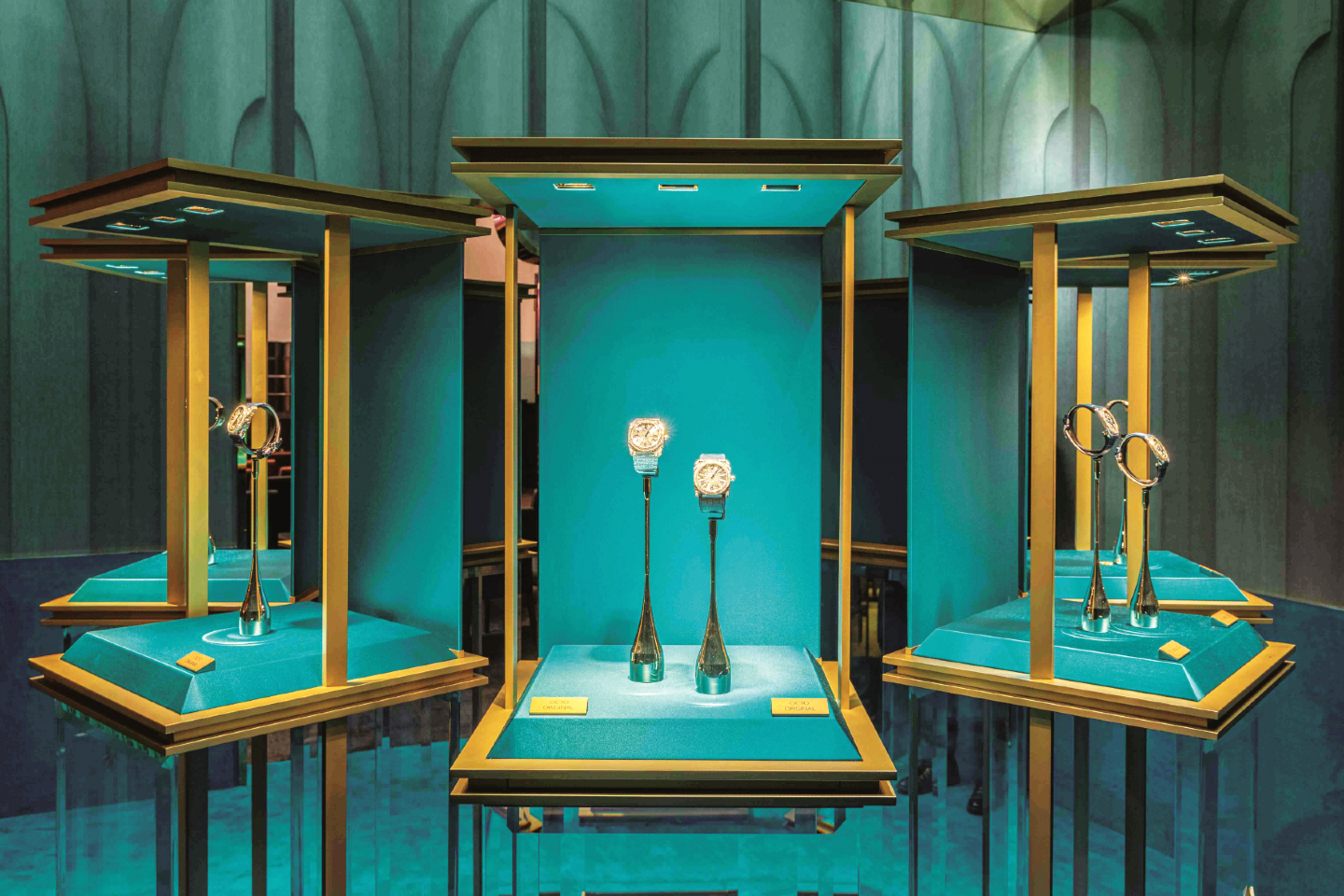
Bulgari's new collection represents an inspired fusion of Italian creativity and Swiss engineering (Photo: Bulgari)
In his third novel, Five Star Billionaire, Malaysian author Tash Aw described the book’s setting — the dynamic tumult of modern Shanghai — in cool and dispassionate prose.
“It is tempting to see them [buildings] as a single mass of light, a collection of illuminated billboards and fancy fluorescent strips that twinkle in the same way. But this is not true; they are not the same. Each one insists itself upon you in a different way, leaving its imprint on your imagination. Each message, if you care to listen, is different.”
The Man Booker Prize nominee was, of course, painting a portrait of the financial metropolis through architecture. But it is a riveting statement to ponder upon, especially when one actually looks out from the Huangpu River to the maelstrom of neon that is Pudong. Architecture in any form is a constant quest to seek new ways of seeing, crafting and expressing identity. It is a discipline that arose from the desire to reconcile engineering with art.
img_20190923_223624.jpg

Luxury watches, which convey their DNA through a balanced integration of artistic and scientific sensibility, are not any different.
An economic powerhouse defined by its blinding rate of change, Shanghai is a fitting bellwether for a country on the verge of radical change. But the city with raffish glamour does not lack history, particularly that of the migrants, who poured in after the Europeans seized its port more than 150 years ago and made their mark. This yang qi, a Chinese term that means “Western-ness”, that sweeps through The Bund — lined with European banks and trading houses in Baroque, Gothic and Romanesque styles — makes Bulgari’s latest address fit right in.
A clear sky hung above the old Shanghai Chamber of Commerce — a restored office building that is now part of the Bulgari Hotel Shanghai — was where the new Serpenti Seduttori was showcased. Originally built in 1916, the neoclassical building features sumptuous detail, from its Corinthian columns and 500 sq m ballroom with triple-height ceilings to the gourmet restaurant Bao Li Xuan upstairs, adorned with Chinese silk wallpaper and black lacquer. Back in the day, the space celebrated the partnership between the British and China’s trading and dealmaking. For this event, it honours the perfect relationship between the Italians’ shrewd design acumen and the future state of Chinese consumer confidence.
bulgari_hotel_2.jpg
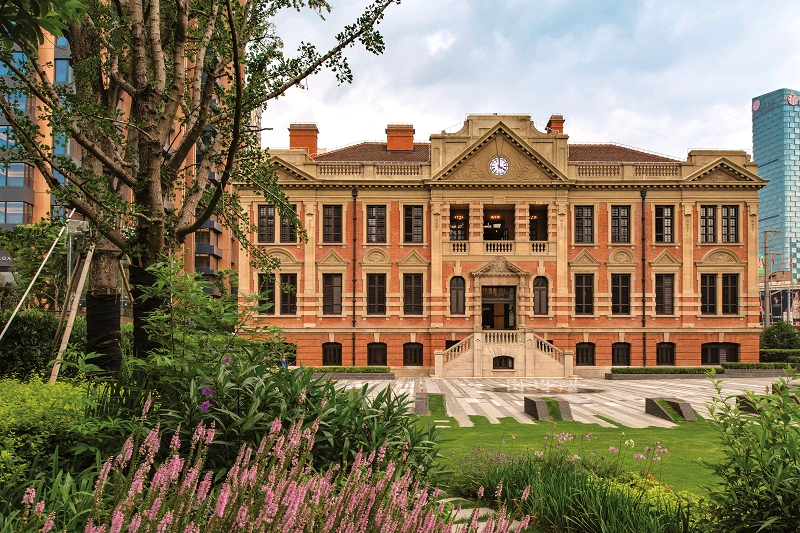
The Serpenti Seduttori line made its debut at watch and jewellery trade show Baselworld earlier this year, but three new styles have recently been introduced to cater for a wider fanbase of women. The current iterations feature a drop-shaped head inspired by the Serpenti Tubogas collection, which slither around the wrist with a supple and tubular litheness. Mimicking the sinuous curves and fluid shape of the serpent, the Seduttori flat case is thinner than ever and embellished with cabochon-cut gemstones that are a nod to Bulgari’s heritage as the Roman jeweller.
Themed “Born to be Gold”, the collection features a more flexible bracelet, pieced together with stylised hexagonal links. Eagle-eyed watch enthusiasts will immediately point out the similar motif found on the Serpenti Scaglie, famous for its colourfully enamelled scales and jewelled heads.
Like the unmistakable cut of a bespoke suit, the watches seamlessly meld design and practicality. An ergonomic 33mm dial highlights a rounded bezel in polished metal, or set with 38 brilliant-cut diamonds, depending on what you choose. Water resistant up to 30m, the case, which houses a quartz movement, is equipped with a crown topped with a ruby, rubellite or blue sapphire cabochon.
10_bvlgari_serpenti_seduttori_collection1.jpg
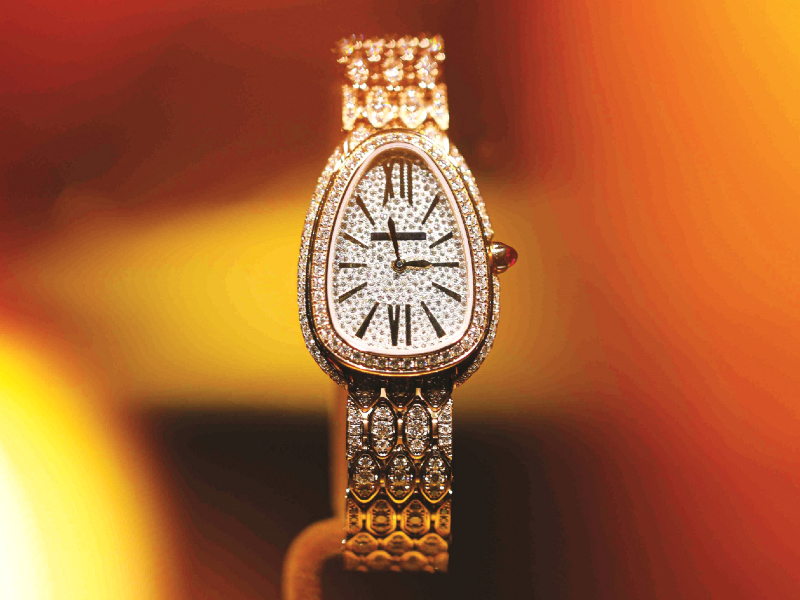
Every aspect of the new Seduttori is an ode to the beautiful moments and triumphs in a woman’s life. The rose-gold, yellow-gold, white-gold and diamond-pavé renditions lend a heightened aura of femininity, emulating Bulgari’s ethos that empowers women.
“What is the evolution of taste? First, you need to understand the concept of beauty and luxury. Beauty is the marker of heritage and savoir faire. It is not a philosophical concept because beauty is something you can see, hear and taste. It can be found in a plate of handmade pasta, or the view that greets you when you have breakfast on the terrace.
“The same applies to designing a watch — every proportion, shape and form of the product can be felt. A beautiful product showcases the evolution of ideas but still maintains a sense of familiarity that never leaves the brand’s DNA,” says Fabrizio Buonamassa Stigliani, the former car designer who is now the creative director of Bulgari.
If the new Seduttori is designed for everyday wear and can be changed as readily as a scarf, the up-to-the-minute editions of Bulgari’s most iconic collections — Serpenti, Octo and Divas’ Dream — displayed at the back of the exhibition room are rare specimens. The Serpenti Misteriosi Romani and Serpenti Misteriosi Pallini high-jewellery secret watches are inspired by classical Rome, where gold bracelets were worn by the elite. While the former is decorated with black onyx inserts and pear-shaped emerald eyes, the Pallini stuns with a design inspired by the five-row, yellow-gold and diamond secret watch from 1955.
3_bvlgari_serpenti_misteriosi_romani.jpg
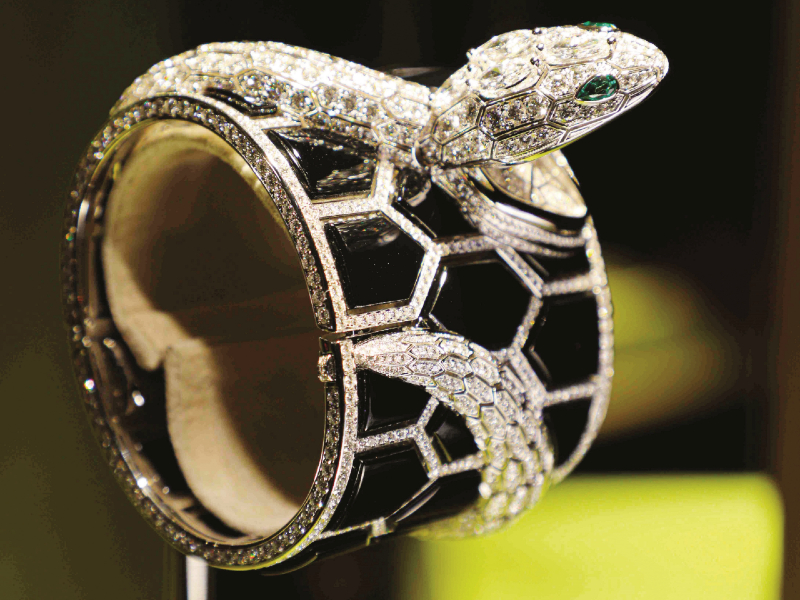
Bulgari’s dexterity in constructing three-dimensional architectural pieces shine with the Octo Roma Tourbillon Sapphire Skeleton, featuring jade and lapis lazuli. This is the first time such stones have been used in men’s watches, bringing a sparkling combination of colours to an otherwise mechanical sculpture. The jade version — Yu, or Jewel of Heaven — is especially tricky to assemble due to its delicate nature but this exceptional feat of gem-setting reminds us that not many craftsmen can hold a candle to the maison’s jewellery-making expertise.
If the Octo Roma Grande Sonnerie, first created by Gerald Genta in 1994, earned its cachet as a masterpiece that contains over 1,000 intricate components, the updated version with Perpetual Calendar makes it the most complicated watch Bulgari has ever attempted. Featuring an 18-carat white-gold case set with baguette diamonds and a titanium middle case, the watch is available in an ultra-limited edition of eight, making it an auspicious piece for this part of the world.
The evolution of watchmaking is attributed to the advancement of machines, but a special Chinese edition of Bulgari’s Divas’ Dream pays tribute to an ancient craft that bears the mark of the hand. A skeletal dial is designed from Chinese paper cutting, a technique that dates back to the Han dynasty and was fashioned from the humblest of materials. Like the consummate paper artisans who use their precision to create beauty, Bulgari has added to its stunning peacock collection an 18-carat, rose-gold skeletonised dial adorned with a paper-cut red motif of the majestic bird.
103280_002_ful118.jpg
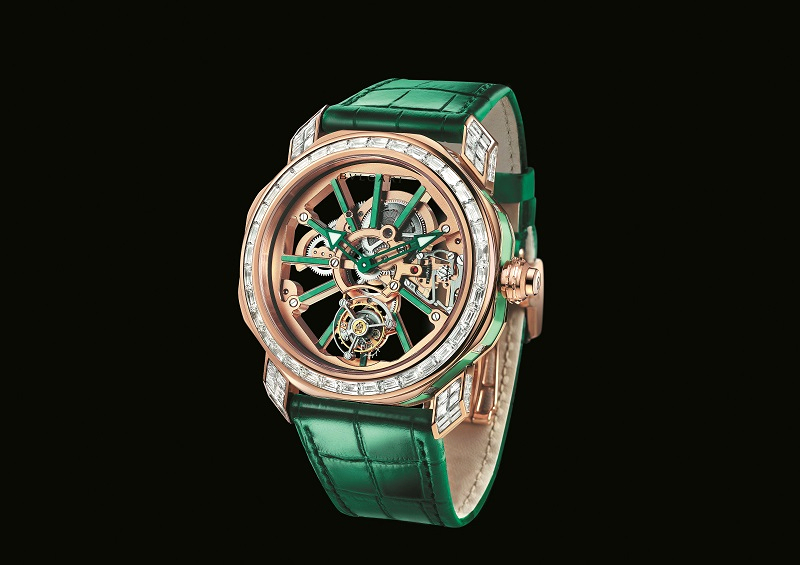
Horology has come a long way from its scientific definition of measuring time as more intricate watch cases and dials make compelling cases for horlogerie as art.
Ending the watch showcase with an after-party at the Baopu Art Museum was fitting then. A constellation of celebrities — including Chinese actresses Zhong Chuxi and Li Meng and actor Wang Yanlin — joined the rest of the guests who shimmied away in a room surrounded by gilded mirrors, interactive wall displays and live music by DJs Kadwell and Zen.
For two days, watch journalists revelled in a kaleidoscope of design, technique as well as craft, and it was made even more indelible in a city that felt adrift in time and scale. Although anchored in a long-standing heritage, Bulgari’s new collection has proven that the manufacture is still capable of surprise and razzmatazz — just like the gaily lit Shanghai that is perennially agleam with enchantment.
This article first appeared on Dec 23, 2019 in The Edge Malaysia.


